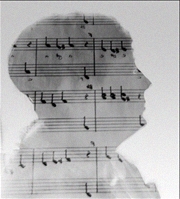Tutor HuntResources Piano Resources
How Often To Practice?
How often should you practice to make progress at piano?
Date : 02/10/2015
Author Information

Uploaded by : Louise
Uploaded on : 02/10/2015
Subject : Piano
How long is a piece of string? 15 minute sessions are ideal to begin as it is vital to sustain your focus and prevent muscular strain, so depending on how much leisure time you have available you may do one to four 15 minute sessions daily throughout the week. As you progress beyond the initial levels you will become more familiar with sitting for a time so your practice session may last 20-30 minutes. It is worth having a short break mid session even if you plan to play for an hour in order to flex your legs so why not pause to go and make a cup of tea? Just do not get distracted! Go back to the piano and focus on a different piece. I like to sit for about 45 minute to one hour and play through 3-6 pieces during that session with some scale work and a good deal of improvisation to keep my focus fresh - but I am a professional player so my body is used to this and I love what I do so the time flies past. Then I will walk a bit, get a cuppa, refocus on a new selection of music. I try to play every day except a long teaching day like Saturday. Some days 4 hours or more, some days 1 hour! As a student you will make good progress over a year with half an hour at least 4 days per week, but younger children will manage on 15 minutes 3 times per week and I like to think adults will play an hour daily for the love of it. Quality of practice is far more use than quantity - keep it fun! No rush - expect to learn pieces over several weeks if you have several to focus on. Don`t neglect scales and technical exercises or the work will build up! Enjoy your playing and ask your tutor for a good variety of pieces always at a realistic level of difficulty: there is a lot of god simplified music now to help you learn. Make a list of themes you`d like to play. Include folk and pop music and try improvising a tune over simple chords like C and G major, keeping the groove moving in your left hand.
This resource was uploaded by: Louise
